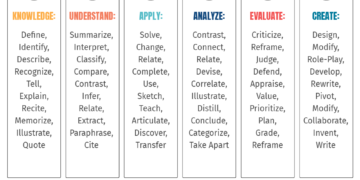Ensure Succession Planning Effectiveness
The success of a business doesn’t just depend on the people who will assume key positions in the future. It’s also how your organization plans to ease them into these positions eventually. Unfortunately, some believe that executives will do an excellent job once promoted to a higher position because they did well in their previous roles. This isn’t the case, as 60% of executives [1] fail in the first 18 months after being promoted or hired. There are various reasons for this—one of them being the lack of a solid succession plan. To ensure the success of your new executives, you must convince stakeholders of the need for a succession plan; this article shares how to integrate it as part of your employee training process.
What Is Succession Planning?
Succession planning identifies and develops potential future leaders within a company to ensure business continuity. It is essential in the event of an unexpected departure of a key employee or a planned retirement. Succession planning allows for proper employee training to be put in place to prepare individuals for future leadership positions, resulting in higher employee retention.
Presenting your succession plan during the onboarding process is ideal. By having transparent upward mobility in the organization, new hires have a clearer idea of how to climb the corporate ladder, thus allowing them to set reasonable expectations and stay in the company longer. Finally, succession planning is beneficial even during layoffs. Companies can retain institutional knowledge and use it to train new employees. The plan enables them to run operations smoothly despite the change in leadership.
How To Incorporate A Succession Plan In Employee Training
You can divide succession planning into three phases:
- Assessment
Understand potential business issues in the future, the critical positions that will address these challenges, and the skills required for each role to deal with the problems properly. - Evaluation
Find employees in your organization who have the skills and potential to fill out the roles in the future. - Development
Create an employee training plan using knowledge captured from current executives that will be passed on to the company’s talent pool.
To help you better understand how to proceed with each phase, below are steps you must take.
1. Assessment Phase: Identify Key Positions
First, you must identify significant business challenges for the next five years at most. The challenges depend on your organization’s business and industry. But some of the more common ones include client dependence, money management, fatigue, founder dependence, and balancing quality and growth.
Next, determine critical positions needed to support business continuity. This involves evaluating the urgency of succession, impact on business operations, unique skills or knowledge base, internal bench strength, and availability of external candidates. Finally, list the competencies, skills, institutional knowledge, and other critical success factors that people who assume critical positions possess. Additional tasks involve evaluating leadership skills, emotional intelligence, and industry-specific expertise.
Former CEO of McCormick and Co., Robert Lawless, used the steps above to develop a transparent five-year succession plan [2]. Part of the plan was to identify strategies the organization must do for all senior executives qualified to become CEO. Ultimately, Alan Wilson’s understanding of company issues and how to resolve them showed he was the right person for the job.
2. Evaluation Phase: Finding The Best Fit
Once you’ve adequately assessed the data needed for setting up your succession plan, it’s time to identify high-potential employees that are right for the positions. First, executives must understand that their roles aren’t limited to their responsibilities. They must also ensure the company will be in better hands even when they’re gone.
“I see my role as CEO to prepare as many people as I can to be CEO, and that’s what I’m doing,” says CEO of Apple, Tim Cook [3]. “And then, the board makes a decision at that point in time.” Knowing that they’ll soon have to pass the role to someone else is, arguably, the most important fact executives in an organization with a robust succession plan must know.
Aside from imparting this knowledge to candidates, you must also look beyond their job performance when evaluating talent. Candidates must also possess other characteristics such as the desire to pursue leadership opportunities, being on board with company culture, empathy and emotional intelligence, composure under pressure, teamwork, and initiative. By pinpointing employees fit for the critical roles above based on their respective competencies, you groom them to meet identified business challenges and succeed in their positions.
3. Development Phase: Developing A Training Plan
The last phase requires you to capture current executives’ knowledge before leaving the organization. This is where a Learning Management System (LMS) comes in handy. You can create portals for each role in your organization that employees can sign up for and log in to. From each portal, structure the information into various topics and create the appropriate training and development materials for each one. For instance, videos and images make communicating knowledge passed on to future leaders much easier to understand.
However, there are times when text is just as good for sharing documentation and templates. Regardless of the content you’ll use in your LMS for succession planning, interactivity is the most important thing to remember. Using animated videos and clickable menus within presentations can increase engagement among employees. This results in helping retain information much longer. Once you have the system in place, you must get your talent pool to run through the modules in their assigned portals. This enables them to learn the necessary information about the role they will inherit soon, which makes the transition much easier.
Aside from learning everything from the LMS, you can assign your talent pool to work directly with executives to help them get more hands-on experience. This comes in the form of working on a project together or a mentorship program. Over time, the executive must provide immediate feedback regarding their performance. From here, your talent knows which skills and characteristics they must work on to prepare them for the role in the future.
Before Barneys New York chose Daniella Vitale as its new CEO in 2017 [4], she had to prove her worth that she was up for the task. She showed this by working with different departments in the organization as the COO. But, more importantly, she had worked with Barneys’ then-CEO, Mark Lee, at Gucci. With eleven years under Lee’s tutelage, he passed on his knowledge to her, which she later used to get an executive position.
Conclusion
Incorporating succession planning into your training is critical for the long-term success of your organization. Implementing the steps for the three phases above ensures your organization can identify the leadership talent it needs to succeed moving forward. Next, you must create training materials for transferring knowledge and information to future leaders.
Different content authoring tools can help streamline the succession planning process by letting you create engaging training materials and monitor employee progress, making developing and nurturing your organization’s future leaders much easier. There are also online templates that enable you to create succession plans without starting from scratch. After choosing a template, you just replace existing content with your own. You can even add stock photos, icons, and dynamic content to help make your presentations stand out. Once done with the project, you export it and upload it to your LMS! To develop your succession plan, you can even collaborate with team members to create training materials much faster!
References
[1] 3 Transitions Even the Best Leaders Struggle With
[2] McCormick’s Successful Succession Plan
[3] Apple CEO Tim Cook says he plans to groom as many successors as possible
[4] Daniella Vitale Named CEO of Barneys New York

Visme
Visme is an all-in-one visual content creation, collaboration, and sharing platform enjoyed by over 19 million users globally, ranging from individual freelancers to teams at Fortune 500 companies.




















